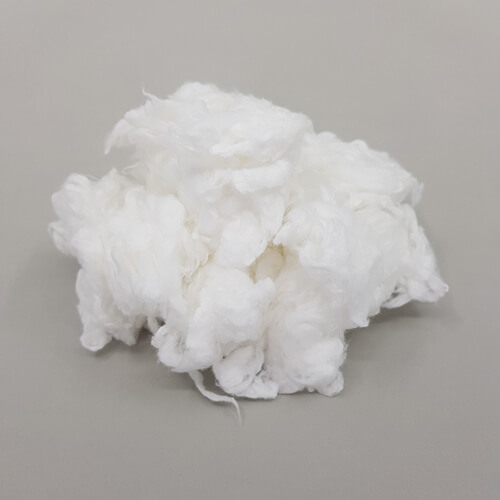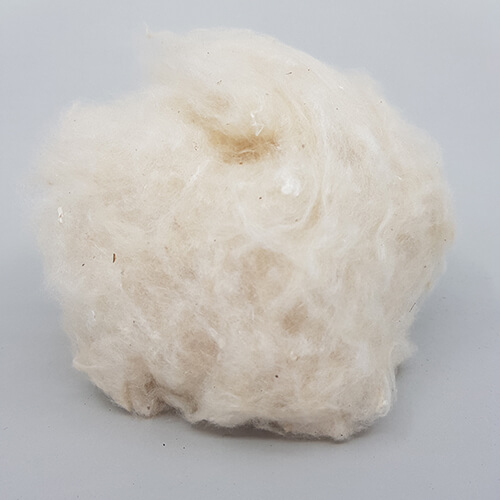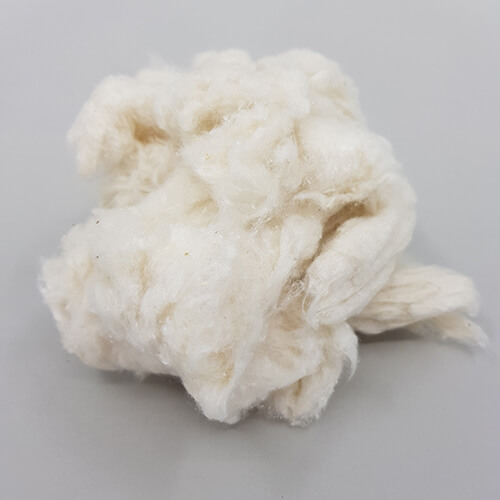We buy
Neaustima uses a variety of fibers in production of nonwovens:
natural fibers (plant and animal), man-made fibers (natural and synthetic polymer fibers) and recycled fibers from textile waste.
 Cotton is a natural fiber that comes from the seedpod of the cotton plant. People have valued cotton for thousands of years as it can be woven and spun into fabric and so it has been cultivated and traded around the world. Cotton is still the world’s most important non-food agricultural commodity.
Cotton is a natural fiber that comes from the seedpod of the cotton plant. People have valued cotton for thousands of years as it can be woven and spun into fabric and so it has been cultivated and traded around the world. Cotton is still the world’s most important non-food agricultural commodity.
 Flax fiber is extracted from the skin of the stem of the flax plant. In its inner bark, there grows long, thickwalled cells of which flax fiber strands are composed. The fabrics made from flax fibers are often referred as ‘linen fabrics.
Flax fiber is extracted from the skin of the stem of the flax plant. In its inner bark, there grows long, thickwalled cells of which flax fiber strands are composed. The fabrics made from flax fibers are often referred as ‘linen fabrics.
 Hemp is an eco-friendly and natural fibre with many strong characteristics which derived from cannabis plants. Hemp fibres are multicellular because they come from plant stems. The plant grows at an exponential rate, yielding more fibre than cotton and flax.
Hemp is an eco-friendly and natural fibre with many strong characteristics which derived from cannabis plants. Hemp fibres are multicellular because they come from plant stems. The plant grows at an exponential rate, yielding more fibre than cotton and flax.
 Kapok fiber is a silky cotton-like substances and originates from the Kapok tree, which is also known as ceiba kentandra. Kapok is a moisture-resistant, quick-drying, resilient, and buoyant fibre. The fibres contain both lignin, a woody plant substance, and cellulose, a carbohydrate.
Kapok fiber is a silky cotton-like substances and originates from the Kapok tree, which is also known as ceiba kentandra. Kapok is a moisture-resistant, quick-drying, resilient, and buoyant fibre. The fibres contain both lignin, a woody plant substance, and cellulose, a carbohydrate.
 Sheep wool – a natural, renewable and biodegradable fibre. Wool is possibly the oldest fiber known to humans. It was one of the first fibers to be spun into yarn and woven into a fabric.
Sheep wool – a natural, renewable and biodegradable fibre. Wool is possibly the oldest fiber known to humans. It was one of the first fibers to be spun into yarn and woven into a fabric.
 Camel wool is a type of wool derived from the coats of camels. This type of fabric is more commonly known as camel hair, and it is usually derived from a camel subspecies known as the Bactrian camel.
Camel wool is a type of wool derived from the coats of camels. This type of fabric is more commonly known as camel hair, and it is usually derived from a camel subspecies known as the Bactrian camel.
 Silk fiber is a natural protein fiber of animal origin. Instead of being grown in the form of hair, it is produced by insects in the form of continuous fine strand of fibers called as filament, to build cocoons.
Silk fiber is a natural protein fiber of animal origin. Instead of being grown in the form of hair, it is produced by insects in the form of continuous fine strand of fibers called as filament, to build cocoons.
 Viscose fiber is made from cellulose, a natural raw material found in wood. It is extracted from beech or spruce wood, eucalyptus or bamboo in a chemical process and then pressed into fiber form under high pressure. This process is the reason why it is called a semi-synthetic raw material: viscose is neither a pure natural fiber such as cotton or silk, nor a synthetic fiber such as polyester.
Viscose fiber is made from cellulose, a natural raw material found in wood. It is extracted from beech or spruce wood, eucalyptus or bamboo in a chemical process and then pressed into fiber form under high pressure. This process is the reason why it is called a semi-synthetic raw material: viscose is neither a pure natural fiber such as cotton or silk, nor a synthetic fiber such as polyester.
 Polylactic acid (PLA) is an environmentally friendly, plant-derived thermoplastic. The fiber forming substance is a lactic acid polymer in which at least 85% by weight are lactic acid ester units derived from naturally occuring sugars (sugar beets and corn).
Polylactic acid (PLA) is an environmentally friendly, plant-derived thermoplastic. The fiber forming substance is a lactic acid polymer in which at least 85% by weight are lactic acid ester units derived from naturally occuring sugars (sugar beets and corn).
 Recycled polyester, often called rPet, is made from recycled plastic bottles. It is a great way to divert plastic from our landfills. The production of recycled polyester requires far fewer resources than that of new fibers and generates fewer CO2 emissions.
Recycled polyester, often called rPet, is made from recycled plastic bottles. It is a great way to divert plastic from our landfills. The production of recycled polyester requires far fewer resources than that of new fibers and generates fewer CO2 emissions.
 Virgin polyester is a synthetic fiber created through a chemical reaction involving petroleum, and it's the most common form of PET (polyethylene terephthalate).
Virgin polyester is a synthetic fiber created through a chemical reaction involving petroleum, and it's the most common form of PET (polyethylene terephthalate).
 Recycled acrylic fiber made of pre-consumer acrylic waste.
Recycled acrylic fiber made of pre-consumer acrylic waste.
 Recycled polypropylene fiber – a mixture of recycled pre-consumer polypropylene waste.
Recycled polypropylene fiber – a mixture of recycled pre-consumer polypropylene waste.